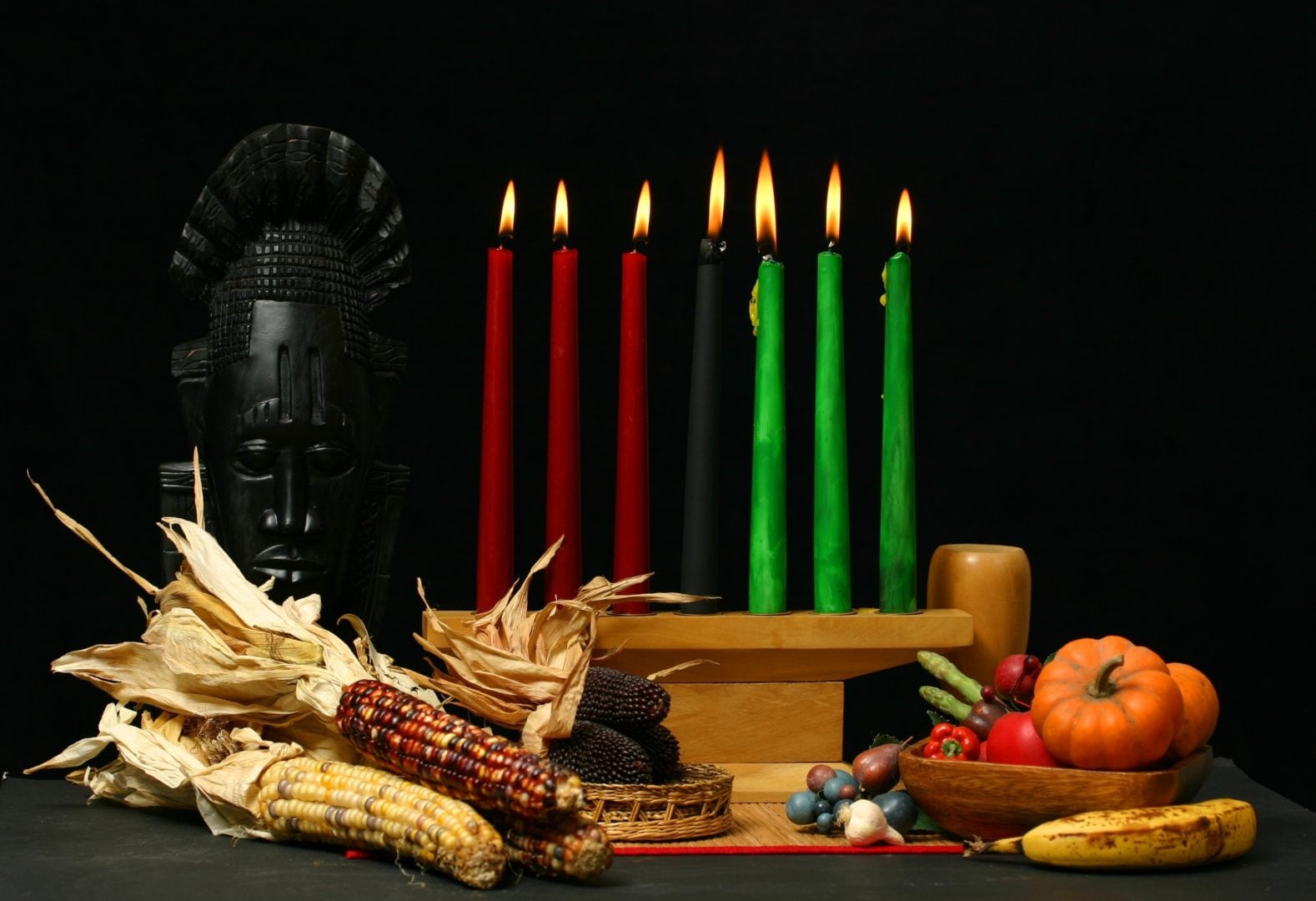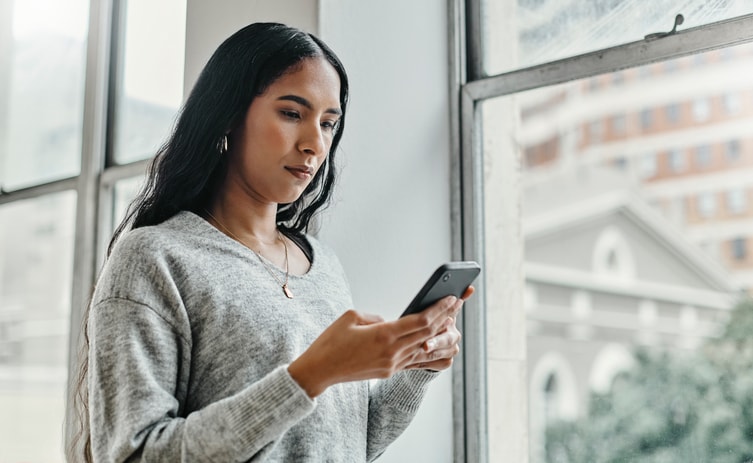In December 2016, millions of people across the U.S. will celebrate the 50th anniversary of Kwanzaa. Here’s everything you need to know about the holiday.
What Is Kwanzaa?
Kwanzaa is a secular holiday that celebrates the African-American community and its culture, heritage and values. According to an excerpt from Dorothy Winbush Riley’s book, “The Complete Kwanzaa: Celebrating Our Cultural Harvest,” “During Kwanzaa, we study, recall, and reflect on our history and the role we are to play as a legacy to the future.”
When Is It?
Kwanzaa is a seven-day holiday that’s observed each year from December 26 to January 1.
What Does “Kwanzaa” Mean?
The name comes from the phrase “matunda ya kwanza,” which means “first fruits” in Swahili, a language widely spoken throughout Africa.
How Did It Start?
Kwanzaa was created in 1966 by Dr. Maulana Karenga, professor and chair of Africana Studies at California State University, Long Beach, and founder of the African cultural organization, The Organization Us. Dr. Karenga created Kwanzaa as a way to bring African-Americans together to celebrate their culture, heritage and communities.
Who Celebrates Kwanzaa?
The exact number of people who celebrate the holiday is unknown, but it’s likely in the tens of millions. Since Kwanzaa is not tied to a religion, many people celebrate both Kwanzaa and another religious holiday, such as Christmas.
Celebrities who have been known to celebrate Kwanzaa include Oprah Winfrey and Maya Angelou, among others.
Why Is It Celebrated for Seven Days?
Each of the seven days of Kwanzaa symbolizes one of the holiday’s seven principles, called the “Nguzo Saba.” The Nguzo Saba are African-American values that focus on building and reinforcing community. They are:
- Umoja (“Unity”): Umoja is the first principle that’s discussed during Kwanzaa, and centers around the idea of building and maintaining unity in the family, community, nation and race.
- Kujichagulia (“Self-Determination”): Kujichagulia is the second principle that’s discussed during Kwanzaa, and centers around the idea of speaking for — and defining — yourself.
- Ujima (“Collective Work and Responsibility”): Ujima is the third principle to be discussed during Kwanzaa, and centers around the idea of working together as a community to solve problems.
- Ujamaa (“Cooperative Economics”): Ujamaa is the fourth principle to be discussed during Kwanzaa, and centers around the idea of creating and supporting businesses that benefit the community.
- Nia (“Purpose”): Nia is the fifth principle to be discussed during Kwanzaa, and centers around the idea of building and developing the community in order to restore its people to their traditional greatness.
- Kuumba (“Creativity”): Kuumba is the sixth principle to be discussed during Kwanzaa, and centers around the idea of working to make the community better for future generations.
- Imani (“Faith”): Imani is the seventh principle to be discussed during Kwanzaa, and centers around the idea of believing in the people of the community and in the victory of their struggle.
What Things Do You Need to Celebrate Kwanzaa?
In order to properly observe Kwanzaa, you will need to have seven key items:
- The Kikombe Cha Umoja (“Unity Cup”): Celebrants drink from this special cup on the sixth day of Kwanzaa to honor their African ancestors.
- The Kinara (“Candleholder”): The kinara, which represents the family’s ancestors, is the center of the Kwanzaa setting and holds the seven candles of Kwanzaa. It can be in any shape, as long as the seven candles are separate from each other.
- The Mazao (“Crops”): The mazao symbolize the harvest fruits that nourished the people of Africa (e.g., fruits, nuts, and vegetables).
- The Mihindi (“Ears of Corn”): Ears of corn represent fertility. One ear of corn is placed on the mkeka for each child in the family.
- The Mishumaa Saba (“Seven Candles”): These seven candles represent each of the seven principles of Kwanzaa. There are three green candles, three red and one black. The black candle represents the principle of Umoja (“unity”), and is placed in the center of the kinara. The three green candles represent the principles of Nia, Ujima and Imani, and are placed on the right side of the black candle. The three red candles represent the principles of Kujichagulia, Ujamaa and Kuumba, and are placed on the left side of the black candle.
- According to Riley, these colors were originally inspired by the Pan-African flag, or “bendera,” that Marcus Garvey created in 1920. Black symbolizes the African-American people; red symbolizes the blood that has been shed in their struggle for freedom and equal rights; and green symbolizes earth, the entity that sustains life and provides hope.
- The Mkeka (“Place Mat”): Made of straw or cloth, this mat symbolizes the celebrants’ African heritage, culture and traditions — in other words, their foundation as a people. Celebrants arrange the other six symbols of Kwanzaa on the mkeka.
- The Zawadi (“Gifts”): These are the gifts that are given on the seventh and final day of Kwanzaa: Imani. According to Riley, these gifts are supposed to be meaningful and “encourage growth, self-determination, achievement and success.” The ultimate goal of gift-giving is to strengthen the relationships you have with your family members and your guests as you head into the new year.
How Do You Celebrate It?
At a high level, Kwanzaa celebrations involve families gathering together on each of the seven nights to reflect upon one of the Nguzo Saba. During each gathering, the children of the family will light the candle that represents the particular principle being discussed. These candles will stay lit until Kwanzaa is over.
But, as with any other holiday, the specific details involved in celebrating Kwanzaa will differ from family to family. For example, some families choose to light the mishumaa saba from left to right, whereas other families will alternate. Despite these differences, however, there are some general practices all families follow. Here’s what a typical Kwanzaa celebration involves:
- Leading up to December 26
- Families decorate their homes in the Kwanzaa colors of black, red and green. Typically, these decorations include the Pan-African bendera, colorful African textiles and art, fresh fruit, and posters and paintings that invoke the Nguzo Saba.
- They will also set up a table in the main room of the house, and drape a green tablecloth over it. The families will lay out the mkeka on the table, and place the rest of the Kwanzaa items on top of it. Once the items are all laid out, they will arrange the mishumaa saba in the kinara.
- Day 1 – Umoja (December 26)
- On the first day of Kwanzaa, families will focus their reflections and discussions on the principle of Umoja, or “unity.”
- During this gathering, children will light the very first mishumaa saba in the kinara, which is the black candle in the middle that represents Umoja.
- Day 2 – Kujichagulia (December 27)
- On the second day of Kwanzaa, families will focus their reflections and discussions on the principle of Kujichagulia, or “self-determination.”
- During this gathering, children will light the far-left mishumaa saba in the kinara, which is a red candle. There should now be two lighted candles.
- Day 3 – Ujima (December 28)
- On the third day of Kwanzaa, families will focus their reflections and discussions on the principle of Ujima, or “collective work and responsibility.”
- During this gathering, children will light the far-right mishumaa saba in the kinara, which is a green candle. (Note: Some families will actually light the candles from left to right, instead, and simply light the second red candle.) There should now be three lighted candles.
- Day 4 – Ujamaa (December 29)
- On the fourth day of Kwanzaa, families will focus their reflections and discussions on the principle of Ujamaa, or “cooperative economics.”
- During this gathering, children will light the second red mishumaa saba in the kinara. There should now be four lighted candles.
- Day 5 – Nia (December 30)
- On the fifth day of Kwanzaa, families will focus their reflections and discussions on the principle of Nia, or “purpose.”
- During this gathering, children will light the second green mishumaa saba in the kinara. There should now be five lighted candles.
- Day 6 – Kuumba (December 31)
- On the sixth day of Kwanzaa, families will focus their reflections and discussions on the principle of Kuumba, or “creativity.”
- Families also host big feasts on this day, called karamu. Traditional African dishes are served, as well as dishes using ingredients Africans brought to the U.S. (e.g., peanuts, sweet potatoes, collard greens, etc.) During this meal, every celebrant drinks from the kikombe cha umoja (“unity cup”) to honor their African ancestors.
- During this gathering, children will light the last red mishumaa saba in the kinara. There should now be six lighted candles.
- Day 7 – Imani (January 1)
- On the seventh day of Kwanzaa, families will focus their reflections and discussions on the principle of Imani, or “faith.”
- Celebrants spend this time quietly reflecting on the past and future of the African people, and on their own goals and values. They will also exchange zawadi with their family and guests.
- During this gathering, children will light the last green mishumaa saba in the kinara. All seven candles should now be lit.
What Types of Gifts Do Children Receive During Kwanzaa?
Children receive zawadi that encourage their growth, self-determination, achievement and success, and reward them for any accomplishments they made throughout the year. These gifts usually include a book on African heritage, as well as some kind of heritage symbol. Presents are often homemade or purchased from African-American-owned businesses.






